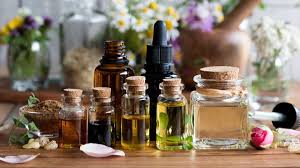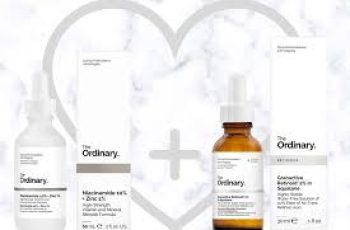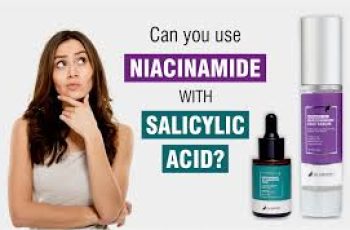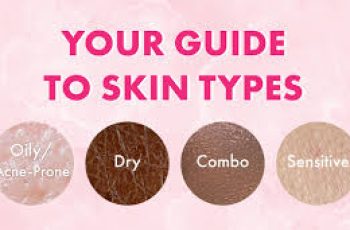
Lavender Oil in Skin Care: Benefits, Side Effects, and How to Use It
Lavender oil has been treasured for centuries around the world for its fragrant aroma and powerful skin-healing properties, making it one of the most beloved natural ingredients in modern skin care.
Extracted from the flowers of the Lavandula angustifolia plant, lavender oil is known for its calming scent, but it also offers a wide range of antimicrobial, anti-inflammatory, and antioxidant benefits.
Although it doesn’t contain hydrating fatty acids and technically isn’t a true oil, it plays a significant role in various skincare products ranging from cleansers to serums and even sunscreens.
This guide explores everything you need to know about lavender oil in skin care—from how it works, to the benefits it offers, potential side effects, and where it fits best in your skincare routine.
What Is Lavender Oil?
Lavender oil is a type of essential oil steam-distilled from the purple flowers of the lavender plant, primarily cultivated in France, the Mediterranean, and parts of the U.S.
It is widely used in skincare and cosmetics for its soothing scent and natural ability to combat microbes, inflammation, and oxidative stress.
Despite being called an “oil,” lavender oil is free of lipids or fats, which means it doesn’t moisturize the skin in the way most oils do.
It has a light, watery texture and is considered one of the mildest essential oils available, often well tolerated by sensitive and reactive skin types.
Because of its gentle nature, it’s commonly found in a wide variety of products including body lotions, shampoos, bath gels, facial creams, and toners.
What Are the Active Compounds in Lavender Oil?
The therapeutic effects of lavender oil come from its unique profile of natural plant compounds that give it powerful antioxidant, antimicrobial, and anti-inflammatory properties.
The two most significant active ingredients in lavender oil are linalool and linalyl acetate, both of which are classified as terpenes that deliver its calming scent and biological effects.
Linalool has been shown to be an effective anti-inflammatory and antibacterial agent, helping reduce skin irritation and limit acne-causing bacterial growth.
Linalyl acetate, though more abundant in lavender oil, is slightly less biologically active but still contributes to its soothing and anti-stress effects.
Lavender oil also contains plant-based compounds such as tannins, coumarins, flavonoids, triterpenoids, esters, ketones, oxides, and sesquiterpenoid alcohols.
Unlike most carrier oils, lavender oil lacks any notable fatty acids and does not contribute to hydration or skin lipid repair on its own.
Benefits of Lavender Oil in Skin Care
Lavender oil is widely loved not only for its relaxing scent but also for its multi-functional properties that benefit nearly all skin types, especially those prone to acne or inflammation.
One of its most celebrated features is its antimicrobial action, which helps eliminate acne-causing bacteria and prevent infection in cuts, wounds, or irritated areas of the skin.
Lavender oil is a natural antioxidant, helping to protect the skin from free radical damage caused by pollution, sun exposure, and environmental toxins.
As an anti-inflammatory, it reduces redness, swelling, and irritation, making it especially useful for people with sensitive or inflamed skin conditions such as eczema or dermatitis.
It has shown promise as a natural sedative, with research indicating that its aroma can reduce stress and anxiety, which is important since stress is a major trigger for acne breakouts.
Lavender oil also exhibits mild skin-brightening abilities by inhibiting melanin production through weak tyrosinase inhibition, making it a gentle option for treating hyperpigmentation.
In hair care, its antioxidants help reduce oxidative stress on the scalp and promote a healthy environment for hair growth, while its antimicrobial properties keep the scalp clean.
Some studies have found that lavender oil, especially when combined with tea tree oil, can help eliminate head lice and may reduce symptoms of alopecia or hair thinning.
Overall, lavender oil serves as a versatile botanical active that enhances many types of skin and hair products with its therapeutic effects and pleasant aroma.
Is Lavender Oil Safe for Skin?
Topically applied lavender oil is considered safe for most people, provided it’s used in appropriate concentrations and hasn’t oxidized from being stored improperly or for too long.
According to the Environmental Working Group (EWG), lavender oil scores a 2 on their safety scale, indicating relatively low concern aside from potential allergenic risks.
Lavender oil is generally safe during pregnancy when used topically or aromatically, but oral ingestion is not recommended due to some studies suggesting mild cytotoxicity.
When properly diluted in a carrier oil or skin care product, it is considered non-toxic, non-irritating, and non-sensitizing for the majority of users.
It is important to note that lavender oil is not known to interfere with medications or cause systemic side effects when applied topically.
Side Effects and Risks of Lavender Oil
While lavender oil is usually well-tolerated, some people may experience allergic reactions, particularly when using older products where the oil has oxidized.
Common allergic symptoms include itchiness, redness, mild swelling, and irritation, especially when applied in higher concentrations or to broken skin.
The process of oxidation increases the allergenic potential of lavender oil, so always store it away from direct sunlight and use products before their expiration dates.
Interestingly, the most common allergens in oxidized lavender oil are not linalool or linalyl acetate—the two main active compounds—meaning isolated versions may be less allergenic.
People with extremely dry skin may notice increased dehydration or flaking, since lavender oil contains no moisturizing elements and may disrupt natural lipids in some skin types.
Lavender oil should never be ingested, as oral consumption has been linked to cytotoxic effects in animal studies and should especially be avoided during pregnancy.
Uses of Lavender Oil in Skin Care Products
Lavender oil is used in a wide range of personal care and beauty products, thanks to its fragrance, antimicrobial effects, and ability to calm both skin and mood.
It can be found in bath gels, facial mists, serums, shampoos, conditioners, body oils, toners, sunscreens, moisturizers, and even lip balms or spot treatments.
Due to its lack of fatty acids, it is not ideal for very dry or flaky skin, unless paired with rich emollients or moisturizers that provide adequate hydration.
Lavender Oil for Dark Spots and Hyperpigmentation
Lavender oil may help reduce the appearance of dark spots due to its mild ability to inhibit tyrosinase, the enzyme responsible for melanin production in the skin.
However, its skin-lightening power is modest at best and works best when combined with more powerful ingredients such as kojic acid, arbutin, niacinamide, or cysteamine.
Lavender oil is often included in brightening or even-tone formulas not as a primary lightener, but to enhance results and soothe irritation from more potent actives.
Lavender Oil in Hair Care
Because of its antimicrobial and antioxidant content, lavender oil is a common ingredient in shampoos, scalp treatments, and leave-in conditioners.
It helps eliminate bacteria and fungi from the scalp, reduce dandruff, and protect the hair and follicles from oxidative damage caused by sun and pollution.
Its scent alone can make a product more desirable, but its ability to reduce stress may also have indirect benefits for hair growth, as chronic stress can trigger hair loss.
Lavender Oil for Acne-Prone Skin
Lavender oil is non-comedogenic, meaning it doesn’t clog pores and can be safely used by acne-prone individuals when included in a balanced skincare routine.
Its antibacterial properties help eliminate P. acnes, the bacteria responsible for breakouts, while its anti-inflammatory action soothes redness and swelling.
Lavender oil can be used alongside retinoids, salicylic acid, or benzoyl peroxide to support acne treatments, provided your skin tolerates the combination well.
Additionally, lavender’s calming effects on the nervous system may reduce stress-related breakouts by lowering cortisol levels, especially when used in aromatherapy.
Lavender Oil for Skin Infections and Wounds
Lavender oil has been shown to be effective in treating bacterial and fungal skin infections, especially when paired with tea tree oil in natural antiseptic formulations.
It is a frequent addition to wound healing creams and antimicrobial gels due to its ability to kill germs, promote repair, and reduce inflammation around minor injuries.
Some studies suggest it may even be useful in treating staph infections, making it a valuable ingredient in natural first-aid and skin-soothing products.
Conclusion: Should You Use Lavender Oil in Your Skin Care Routine?
If you’re looking for a multi-tasking natural ingredient with anti-inflammatory, antimicrobial, antioxidant, and aromatherapeutic benefits, lavender oil may be worth trying.
It’s safe for most people when applied topically, works well in acne and infection-fighting products, and adds soothing effects to routines focused on calming the skin.
However, it’s not ideal for very dry or lipid-depleted skin unless balanced with moisturizing ingredients, and care must be taken to avoid oxidized or expired products.
As with any skincare ingredient, it’s best to patch test before using lavender oil regularly, especially if you have allergies or extremely sensitive skin.



